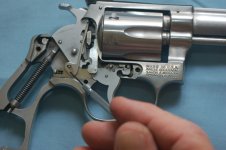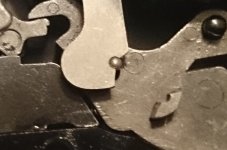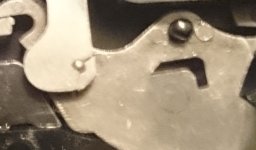XIIIthguards
Inactive
So I just recently picked up a new Smith and Wesson model 438. I know that some people have a strong disdain for them, but I've always thought the old Bodyguard was an ideal design for defensive carry, with a shrouded hammer that doesnt snag but allows for SA firing.
But I digress- my main issue was I was wondering about the frame. According to Smith and Wesson's own website, the 438 is a Scandium frame model rather than the aluminum of the 638. Half of the reason I bought it was to replace a sweet model 360j that I traded off in a fit of insanity some time back. However, I have also seen much talk on reviews and such that act as if it is just a regular aluminum frame like the 638 but with a black finish. I was just curious if anyone can say for certain if it is indeed a scandium frame model, or if it no longer is and S&W needs to update their site info. I have noticed that it has an extra pin in the body (see picture) like my 360j did, which I know was a scandium model. Any insight would be appreciated.
But I digress- my main issue was I was wondering about the frame. According to Smith and Wesson's own website, the 438 is a Scandium frame model rather than the aluminum of the 638. Half of the reason I bought it was to replace a sweet model 360j that I traded off in a fit of insanity some time back. However, I have also seen much talk on reviews and such that act as if it is just a regular aluminum frame like the 638 but with a black finish. I was just curious if anyone can say for certain if it is indeed a scandium frame model, or if it no longer is and S&W needs to update their site info. I have noticed that it has an extra pin in the body (see picture) like my 360j did, which I know was a scandium model. Any insight would be appreciated.





